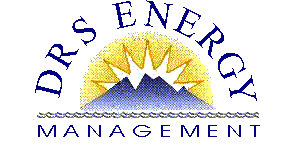An energy audit is the quantitative analyses - derived from accepted engineering
practices, including sophisticated energy modeling or building
simulation - of facility end-use energy consumption and costs. The purpose
of the audit is to identify and implement energy efficiency, renewable energy,
and, if appropriate, water conservation measures. The audit team assists with
key aspects of energy management such as arranging for and conducting the
building audit, identifying technologies for cost-effective retrofits, reviewing
funding alternatives, and helping develop monitoring strategies.
An example of Energy Auditing that DRS ENERGY
MANAGEMENTconducts is that of the
US DOE FEMP SAVEnergy
Program. This comprehensive audit surveys the condition and operation
of federal buildings and their systems, including the building envelope and all
energy-consuming equipment. Energy use in these facilities is assessed,
cost-effective energy conservation measures are identified and operation and
maintenance recommendations are provided. A water conservation screening, using
Watergy water screening software, is provided. A Renewable Energy Screening, using the
Federal Renewable Energy Screening Assistant software (FRESA),
is also featured in the energy conservation report provided.
The above audit process is a comprehensive one that can include the use of
energy modeling or building computer simulations.
These simulations involve use of sophisticated software programs such as
DOE-2, eQUEST, EnergyPlus, EZSim, etc., that analyze energy use within a
building through accepted engineering load and weather calculations.
Utility data is used to corroborate a simulation's results and accurate
predictions for energy savings strategies can then be determined through the
modeling process.
 a
division of Dorough
Resources, LLC
a
division of Dorough
Resources, LLC
